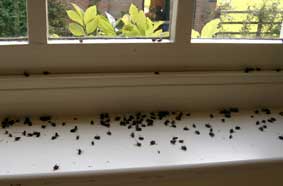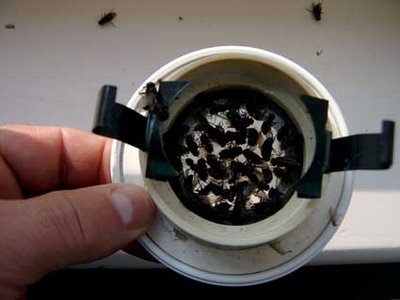The Autumn Air Show
Living in a remote house with nothing but fields on all side sounds like the perfect idill. It certainly has its up sides but there are one or two downsides as well. Not all remote places have the same problems or the same benefits.
Every autumn, just as the temperature begins to drop and the chestnut trees start to turn from their dark summer green to the beautiful ocres and russet colours, we have the local air show. This is not the Duxford extravaganza. This is the Insect Airshow. Our bees seem to have been well looked after but the strays and wild bees have smelt the honey that we extracted and are out looking for it, so they can rob it for their own winter stores. This in its self is not too much of a problem. One can dodge the odd bee in the house (I hesitate to swat or spray them now I am in the apiarist fraternity). I can also tell that they are not my bees from my hive... you do get to know them.
No. The real Insect Airshow appears on warm sunny days in autumn. One side of our house faces in each direction. The south side on a warm sunny afternoon changes colour.
It grows darker as the number of small files bask in the hot sun. These are the dreaded cluster flies. They are looking f
 or a place to hibernate and in rural areas they tend to creep into crevices in houses.
or a place to hibernate and in rural areas they tend to creep into crevices in houses.The roof space is full of them.
The windows facing south have 100s of dead flies on the window cills. They can squeeze through the tiniest gaps between the window and the frame. They creep into the folds of the curtains. They die in their 1000's all over the house.
But the worst place is in the bathrooms. The lights are a recessed type, and which puncture the ceiling into the roof space. Most of the light is aimed down wards, but there is enough light in the roof space to attract the squadrons of cluster flies. They try to creep through the gap into the bathroom but nearly all get frazzeled by the bulb.
The numbers are so large that the bathroom eventually becomes dark. (The picture shows just a few hours collection when the light was only on for about half and hour.) So I have to pull out the bulbs and scrape out thousands of flies into the bin. Then clean the glass on the light which has been coated with brown cooked fly ointment.
 Cluster flies are strange:
Cluster flies are strange:They do not eat.
They are not attracted to theose sticky fly papers.
They are not attracted to ultra violet fly zappers.
If you leave them for a day or two they leave an unpleasant oily smell and stain.
Last year I purchased a couple of gallons of persistent insecticide called Protctor "C". This is excellent stuff. You spray it onto a surface and it will kill any bug that walks over it for about 2 months. The only trouble is that I have to spray the inside and outside of all south and west facing windows and much of the roof space.
I also spray it onto the bricks of the south facing outside walls. It can be used in kitchens and is harmless to mammals. (It does kill fish, however).
The other thing you need is a batch of new bags for the vacuum cleaner. It is a once a day job, every evening after the sun has gone down. I must have collected several gallons of fly carcasses by now!
At least they will be gone when the first frost arrives! I can't wait for it!
Labels: At Home

1 Comments:
This isn't an advert i promise just a recommendation that for the cluster flies you try the powdertrap cluster buster.
Post a Comment
Subscribe to Post Comments [Atom]
<< Home